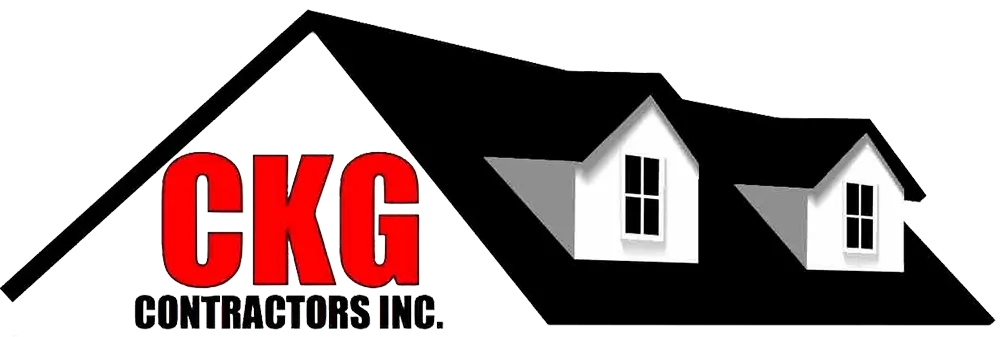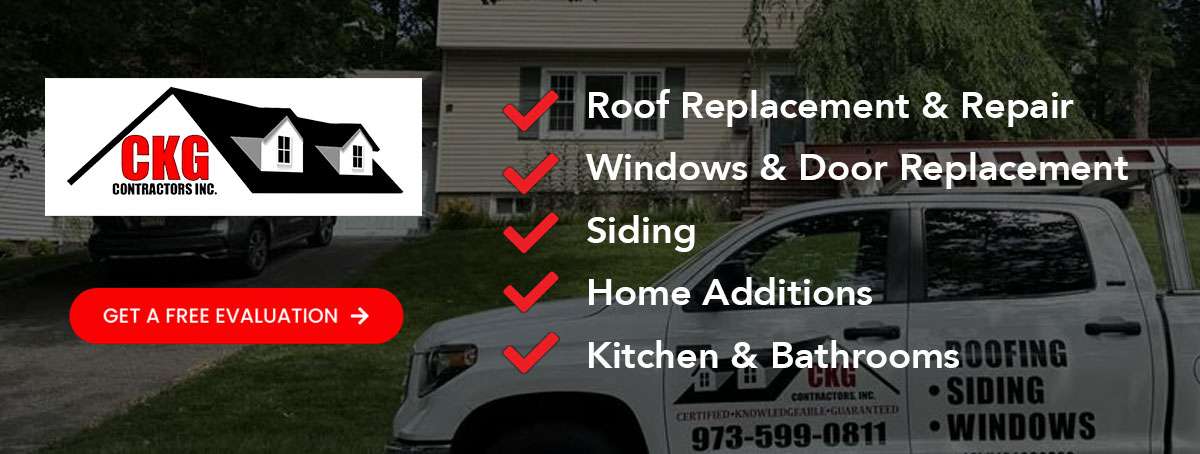Table Of Contents:
- Common Mistakes Businesses Make When Hiring a Commercial Roofing Contractor: How to Avoid Costly Errors
- What Are the Most Common Contractor Selection Mistakes Businesses Make?
- How Do Project Planning Mistakes Impact Commercial Roofing Outcomes?
- What Are the Key Mistakes During the Roofing Process to Avoid?
- How Do Cost and Budget Mistakes Affect Commercial Roofing Projects?
- What Are Common Material-Specific Mistakes When Choosing Commercial Roofing?
- How Can Businesses Verify and Evaluate Commercial Roofing Contractors Effectively?
- What Are the Long-Term Impacts of Hiring the Wrong Commercial Roofing Contractor?
- Detailed Cost and Material Assessment Lists
- How Can Businesses Verify and Evaluate Commercial Roofing Contractors Effectively? (Detailed Table Comparison)
- What Are the Long-Term Impacts of Hiring the Wrong Commercial Roofing Contractor? (Detailed List)
- Frequently Asked Questions
Common Mistakes Businesses Make When Hiring a Commercial Roofing Contractor: How to Avoid Costly Errors
The process of selecting a commercial roofing contractor can be a daunting task for businesses, especially when the stakes involve the integrity, longevity, and energy efficiency of a crucial asset. Many companies, driven by deadlines, budget constraints, or insufficient industry expertise, end up making mistakes that prove costly over the long term. Missteps in contractor selection can lead to subpar workmanship, structural issues, and unexpected repair costs, like storm damage repair, that prove challenging to manage, and even legal disputes. This article explores the most common errors businesses make during the hiring process for commercial roofing contractors, providing detailed guidance on what to avoid and how to ensure a successful project outcome.
In today’s market, commercial roofing is not just about aesthetics or shelter—it is a significant factor in energy conservation, sustainability initiatives, and asset protection. Poor roofing choices can cause water infiltration, reduced insulation, and increased maintenance expenses, ultimately impacting a company‘s operational costs. With an emphasis on clear communication, industry-standard safety protocols, and verified contractor credentials, businesses can safeguard their investments and guarantee quality roofing solutions that stand the test of time.
This comprehensive guide addresses critical areas in contractor selection, project planning, execution, cost management, and material-specific errors. Each section provides a direct answer to commonly posed questions by businesses. Detailed lists and expert-backed tables illustrate comparisons and quantifiable data. By understanding and mitigating these common pitfalls, business owners and facility managers can avoid costly errors and ensure that their roofing projects comply with regulatory standards while promoting long-term durability and performance.
Each section below begins with a specific query followed by an explanation supported by industry examples, case studies, and data points. The insights provided here help businesses navigate the complexities of commercial roofing projects effectively, ensuring that due diligence, proper planning, and ongoing supervision lead directly to successful outcomes.
Transitioning now to a detailed examination of the contractor selection process, the subsequent sections delve into the nuances of licensing, inspections, budgeting, and material choices. Each error-prone area is discussed extensively, along with actionable tips and checklists that can be used to evaluate contractor reliability and project feasibility. Ultimately, this guide aims to empower business owners with the knowledge necessary to make informed decisions, select quality contractors, and achieve a roofing project that meets both budgetary and performance expectations.
What Are the Most Common Contractor Selection Mistakes Businesses Make?
Businesses often falter in selecting the right roofing contractor due to various oversights. One frequent mistake is not thoroughly verifying the contractor’s credentials—such as licensing, insurance, and bonding. This lack of diligence can expose companies to financial and legal risks if the contractor fails to deliver quality work or faces accident liabilities during the project.
Why Is Verifying Licensing and Insurance Essential?
Verifying a contractor’s licensing and insurance guarantees compliance with state and local regulations and confirms they are equipped to handle the job. Licensed contractors have met minimum competency requirements, while proper insurance protects against liabilities like property damage or personal injury. For example, a roofing contractor with full liability and workers’ compensation coverage minimizes risks associated with accidental mishaps on-site. Businesses should request and verify copies of all certificates, while also checking for any history of violations or lawsuits. Neglecting these steps can result in costly delays, legal fees, and uncompensated damages.
How Can Checking References and Reviews Prevent Problems?
Reference checks and online reviews offer insights into a contractor’s past performance, work quality, and reliability. Speaking directly with previous clients can reveal hidden issues such as poor communication, cost overruns, and subpar work. Detailed reviews, supported by before-and-after photos or testimonials, help assess consistent performance and project management skills. Third-party websites can highlight patterns of complaints or praise, enabling businesses to identify potential red flags before making contractual commitments.
What Are the Risks of Choosing the Lowest Bid Without Considering Quality?
Opting for the lowest bid often leads to unforeseen issues, as the cheapest offer may reflect substandard materials, inexperienced labor, or a lack of attention to detail. While a lower bid may seem economically appealing, it frequently hides costs such as delays, rework, or premature deterioration. Quality roofing projects require balancing cost and product excellence; an excessively low bid might not meet the rigorous standards needed for durability. Businesses must evaluate bids based on detailed specifications, warranty terms, and material quality rather than price alone.
Why Is Getting a Detailed Contract Crucial Before Hiring?
A detailed contract acts as a legally binding agreement outlining the scope, materials, timelines, payment schedules, and responsibilities of both parties. Without it, ambiguities can lead to disputes, incomplete work, or additional charges. The contract should clearly specify roofing materials, installation techniques, performance standards, and contingency plans for unexpected challenges. Including milestones and penalty clauses for delays provides a roadmap for execution and accountability, reducing the risk of miscommunication and project failures.
How Do Project Planning Mistakes Impact Commercial Roofing Outcomes?

Project planning is a critical phase where inadequate planning can jeopardize the entire roofing project. Skipping thorough planning often leads to delays, cost overruns, and degraded system performance. Common mistakes include misjudging material needs, underestimating labor requirements, and neglecting roof design intricacies that respond to environmental factors and building codes.
What Happens When Businesses Don’t Understand Roofing Material Options?
A lack of understanding of roofing material options leads to suboptimal choices affecting energy efficiency, durability, and maintenance needs. Each material—TPO, EPDM, metal, or bitumen—has distinct performance attributes and installation requirements. For example, while TPO roofs offer energy efficiency by reflecting sunlight, choosing the wrong variant without considering local climate can cause premature degradation. Businesses must compare durability and warranty terms among materials and consult experts to select the most suitable option. Failure to do so might compromise insulation, increase energy bills, and require early roof replacement, directly impacting return on investment.
Why Is a Proper Roof Inspection Important Before Starting?
A thorough roof inspection identifies existing damages, structural weaknesses, and potential hazards before a new installation begins. Skipping this step can lead to complications such as hidden leaks, mold infestations, or weakened support structures that undermine the new roof’s performance. Professional inspections using tools like infrared thermography provide a baseline for necessary repairs, ensuring a sound foundation for the new installation while also saving on potential repair costs in the future.
How Does Ignoring Building Structure Affect Roofing Projects?
Ignoring the details of a building’s structure can lead to mismatches between the roofing system and its support framework. Each building’s design—truss configuration, load-bearing capacity, and insulation separation—plays a crucial role in a roof’s performance. Failure to account for these attributes may result in errors where the roof is prone to sagging, water pooling, or collapse under heavy loads. Collaborating with structural engineers to evaluate and adjust the roof design can help avoid such issues.
What Are the Consequences of Failing to Plan for Weather Conditions?
Weather considerations are essential in commercial roofing projects. Adverse conditions—unexpected rainstorms, extreme heat, or high winds—can delay installation, damage partially completed roofs, or degrade sealants and adhesives. In regions with harsh weather, planning should include scheduling flexibility, protection for materials, and contingency budgets. Overlooking weather factors may lead to significant delays and increased costs, compromising overall roof durability.
What Are the Key Mistakes During the Roofing Process to Avoid?
Even with proper planning and contractor selection, execution errors can compromise roofing performance and incur extra expenses. Common mistakes include inadequate supervision, neglect of safety protocols, and slow responses to emerging issues. Close attention during installation is crucial to ensure the roof performs as expected.
Why Is Supervising the Roofing Work Important?
Supervision ensures that the contractor adheres to approved designs, timelines, and safety standards. Regular on-site inspections by a knowledgeable project manager or quality control expert can identify minor issues before they escalate. For example, verifying correct installation of membranes, even application of sealants, and secure fastening of panels can prevent leaks and structural failures. Active supervision boosts accountability and enables immediate corrections of any deviations from project specifications.
How Can Ignoring Safety Regulations Lead to Issues?
Ignoring safety regulations can have both immediate and long-term consequences. Strict adherence to OSHA standards and local building codes not only protects workers but also prevents the project from becoming a liability. Hazards such as improperly secured scaffolding or lack of protective equipment can lead to accidents, project delays, and increased costs due to legal penalties. Maintaining rigorous safety protocols is essential for a smooth, uninterrupted project timeline.
What Problems Arise From Not Addressing Issues Promptly?
Delaying responses to minor roofing issues can cause them to escalate into major failures. Small leaks or loose fasteners, if neglected, may result in water damage, mold growth, or structural weakening, eventually necessitating a complete re-roofing. Prompt detection and resolution maintain the roof’s integrity and extend its service life, reducing the likelihood of emergency repairs and preserving warranty coverage.
Why Should Businesses Always Get a Roofing Warranty?
A comprehensive roofing warranty offers protection against defects in workmanship or materials beyond the initial installation period. It reassures businesses that the contractor stands behind their work by covering necessary repairs or replacements. Clear warranty terms, specifying coverage duration and the claims process, also add value to the property while providing financial security and peace of mind.
How Do Cost and Budget Mistakes Affect Commercial Roofing Projects?

Budget management is critical in commercial roofing projects. Inaccurate cost estimation can derail a project by causing resource shortages, delays, and inflated expenses. Cost-related mistakes occur when businesses fail to plan for immediate and long-term financial needs, including maintenance, warranties, and potential rework. Insufficient budgeting may save money upfront but result in higher overall costs.
Why Is Getting Multiple Bids Important for Budget Accuracy?
Obtaining multiple bids gives businesses a comprehensive view of market rates and the scope of work required. It provides leverage in negotiations and reduces the risk of overpricing by any one contractor. Comparing bids—detailing labor, materials, and incidentals—ensures fairness in pricing and helps reveal discrepancies in service quality. A bidding comparison table can clearly highlight these factors, enabling more realistic budget allocation.
How Can Misunderstanding Payment Schedules Cause Problems?
Misunderstanding payment schedules can lead to cash flow issues, delayed progress, and disputes over project milestones. Many contracts specify progress payments tied to specific tasks; vague terms can result in premature or delayed payments. Clear documentation of all payment phases—from deposits to final settlements—is essential to ensure financial transactions remain fair and transparent throughout the project.
What Are the Risks of Not Considering Long-Term Roofing Costs?
Focusing only on upfront installation costs without considering long-term expenses can be detrimental. Long-term costs include routine maintenance, repairs, and even full roof replacement due to premature wear. A cost-effective solution balances initial expenses with durability, efficiency, and warranty support. Ignoring these factors may save money initially but often results in frequent repairs, increased operational costs, and overall depreciation of the asset.
How Can Financing Options Influence Project Success?
Financing options such as leasing, loans, or deferred payment plans can ease the upfront financial burden and preserve cash flow. Favorable financing terms allow businesses to invest in high-quality materials and expert installation, while also providing flexibility to incorporate contingency budgets for unforeseen issues. Comparing different financing scenarios and calculating the total cost of ownership is critical to avoid unexpected financial strain and ensure project continuity.
What Are Common Material-Specific Mistakes When Choosing Commercial Roofing?
Selecting the right roofing materials is crucial in commercial projects. Material-specific mistakes occur when roofing choices do not align with environmental conditions, building usage, and maintenance requirements. Each material has advantages and limitations; a poor choice can lead to premature deterioration, increased energy costs, or structural inadequacies.
What Mistakes Should Businesses Avoid When Choosing TPO Roofing?
Thermoplastic polyolefin (TPO) roofing is popular for its energy efficiency, heat reflection, and affordability. However, mistakes include choosing TPO products with inadequate UV stabilization or poor seam strength. Lower-quality TPO membranes may fail in extreme weather, leading to seam separation and punctures. It is vital to assess manufacturer certifications, test data, and warranty terms, and to ensure proper installation practices are followed.
What Are the Common Errors in Selecting EPDM Roofing?
EPDM roofing systems are durable and cost-effective but demand precise installation. Common errors include selecting membranes that do not match the building’s thermal expansion or failing to check adhesive compatibility. Choosing thinner or lower-quality EPDM products, combined with inadequate surface preparation, can result in frequent leaks and repairs. Adhering to proper installation protocols and regular inspections is key to maintaining EPDM performance.
How Can Choosing the Wrong Metal Roofing Lead to Issues?
Metal roofing offers durability, energy efficiency, and aesthetic appeal when properly selected and installed. However, using a metal alloy unsuited to local environmental conditions—such as coastal areas prone to salt-induced corrosion—can compromise structural integrity. Improper installation techniques, like insufficient underlayment or fastening, may result in leaks and voided warranties. It is essential to consider environmental exposure, maintenance requirements, and design compatibility when choosing metal roofing materials.
How Can Businesses Verify and Evaluate Commercial Roofing Contractors Effectively?

Effective verification and evaluation methods are indispensable for securing a reliable commercial roofing contractor. Without thorough checks, businesses risk engaging contractors who may lack the necessary expertise or commitment to quality. This section outlines the steps to ensure contractors have both the required credentials and a proven history of successful installations.
What Licensing and Insurance Checks Are Necessary?
Businesses must verify that contractors hold current licenses as well as adequate liability insurance and workers’ compensation coverage. These checks ensure regulatory compliance and protect against potential legal liabilities. Request copies of licenses and insurance documents and cross-check them with issuing authorities to mitigate risks from contractors with histories of claims or safety violations.
How to Use References and Reviews to Assess Contractor Reliability?
Gathering references and analyzing reviews provides deep insights into a contractor’s performance history. A strong portfolio supported by positive testimonials serves as tangible evidence of past project quality. Reaching out to multiple past clients helps confirm the contractor’s reliability, timeliness, and problem-solving abilities. Online ratings and local business bureau data further reinforce these assessments by highlighting consistent quality and clear communication.
What Questions Should You Ask a Commercial Roofing Contractor?
Key questions should assess both technical expertise and communication skills. Inquiries should cover recommended materials, installation methods, project timelines, and warranty coverage. Additionally, ask about contingency plans for weather delays, breakdowns of costs, and past project examples. Discussing payment schedules, subcontractor use, and change order policies ensures every aspect of the project is clearly addressed.
What Are the Long-Term Impacts of Hiring the Wrong Commercial Roofing Contractor?
Hiring the wrong roofing contractor can have significant long-term consequences on both the financial and physical health of a building. Beyond the immediate impact of poor workmanship, an inferior roofing project can lead to ongoing maintenance issues, increased repair costs, safety hazards, and accelerated roof deterioration. These impacts affect operational costs and asset value.
How Do Poor Contractor Choices Affect Roof Longevity and Maintenance?
A poor contractor choice often results in installations that do not meet industry standards. This can lead to frequent issues such as leaks, improper drainage, and premature material degradation, necessitating repairs or even early full replacements. A well-installed roof may extend its service life by 20% or more compared to one with poor workmanship. Overlooking this can increase insurance premiums and reduce property value.
What Financial Consequences Can Result From Hiring Mistakes?
Hiring an unqualified contractor can lead to incremental repair costs, unexpected downtime, and potential litigation expenses. For example, water damage from a faulty installation can trigger high remediation costs such as mold removal and structural repairs, while poor energy efficiency may increase utility bills over time.
How Can Businesses Protect Themselves From Future Roofing Problems?
Implementing proactive measures during contractor selection and post-installation phases is essential. This includes obtaining detailed contracts with clear warranty provisions, scheduling regular maintenance and inspections, and establishing strong communication channels with the contractor. Performance bonds or guarantees further provide financial security and help create a buffer against unforeseen issues.
Detailed Cost and Material Assessment Lists
Below are detailed lists and tables that provide insights into various aspects of the roofing process. These actionable recommendations help businesses when planning and executing commercial roofing projects.
List 1: 7 Key Steps to Verify Contractor Credentials
- Request Licenses and Certifications – Ensure Valid Credentials Confirm that the contractor holds current state and local licenses. Request and verify copies of certifications to avoid legal ramifications and subpar workmanship.
- Examine Insurance Coverage – Protect Against Liabilities Check for comprehensive liability insurance and workers’ compensation to protect against on-site accidents or property damage.
- Review Past Projects – Evaluate Quality and Consistency Request a portfolio or case studies to assess the contractor’s expertise and adherence to industry standards.
- Conduct Reference Checks – Gather Client Feedback Contact previous clients for honest insights into project performance, communication, and post-installation support.
- Check for Complaints – Use Business Bureau Data Research complaints on consumer protection sites and the Better Business Bureau to uncover any recurring issues.
- Confirm Corporate Stability – Analyze Business Longevity Evaluate how long the contractor has been in business and the scope of completed projects.
- Review Warranty and Support Terms – Secure Long-Term Protection Ensure warranty terms clearly cover materials and workmanship, reflecting the contractor’s confidence in their services.
List 2: 7 Common Planning Errors in Roofing Projects
- Underestimating Material Requirements – Insufficient Resource Estimates Miscalculations in material quantities can lead to delays and cost overruns. A detailed material inventory prevents shortages.
- Ignoring Environmental Assessments – Failing to Account for Local Climate Overlooking local weather conditions may lead to material degradation. Accurate assessments ensure compatibility with the selected roofing system.
- Neglecting Structural Evaluations – Skipping Comprehensive Building Inspections An incomplete architectural review may cause mismatches between the roof and the building’s support structure.
- Inadequate Budget Forecasting – Overlooking Hidden Costs Failing to include unforeseen repairs and regulatory fees can distort the budget. Detailed forecasting with contingency plans minimizes risks.
- Faulty Timeline Projections – Underestimating Project Duration An overly optimistic schedule may lead to rushed work and quality issues. Using historical data to set realistic timelines is crucial.
- Not Considering Labor Availability – Overlooking Workforce Schedules Underestimating labor needs, especially during peak seasons, can delay a project. Ensuring proper workforce planning enhances scheduling accuracy.
- Overlooking Permit and Regulatory Processes – Missing Bureaucratic Steps Failing to secure all necessary permits can cause significant delays. Reviewing local policies ensures timely compliance.
List 3: 7 Common Execution Mistakes on Site
- Lack of Daily Supervision – Reduced On-Site Accountability Insufficient oversight can allow small errors to compound. Daily supervision helps ensure quality adherence.
- Poor Worksite Safety Practices – Inadequate Protective Measures Compromised safety protocols elevate the risk of accidents. Strict adherence to safety guidelines minimizes hazards.
- Improper Material Handling – Mishandling Leading to Waste Poor handling can damage materials and increase costs. Proper training and storage maintain material integrity.
- Skewed Installation Techniques – Deviating from Manufacturer Guidelines Deviations from recommended practices can void warranties and reduce roof lifespan. Precision is vital.
- Delayed Issue Reporting – Allowing Minor Issues to Escalate Failing to address small issues promptly can lead to major problems. Immediate reporting ensures continuous quality control.
- Inconsistent Communication – Misunderstandings Between Stakeholders Poor on-site communication can lead to deviations from design specifications. Regular updates create alignment and clarity.
- Insufficient Clean-Up and Post-Installation Checks – Overlooking Final Quality Assurance Neglecting thorough cleanup after installation can hide defects. Comprehensive final inspections secure long-term performance.
List 4: 7 Material-Specific Considerations for Commercial Roofing
- TPO Roofing – Assessing UV-Resistance and Seam Strength Ensure selected TPO membranes offer robust UV stabilization and strong welding seams for energy-efficient performance.
- EPDM Roofing – Verifying Thickness and Adhesive Compatibility Check that EPDM products are of sufficient thickness and that adhesives are compatible to reduce the risk of seam failure.
- Metal Roofing – Evaluating Alloy Suitability and Corrosion Resistance Choose metal materials suited to local conditions; proper alloy selection helps avoid premature corrosion.
- Bitumen Roofing – Ensuring Proper Application and Sealant Quality Bitumen systems require precise application and high-quality sealants. Ensure installers are well-trained.
- Slate and Tile Roofing – Verifying Structural Support and Weight Considerations Due to their weight, slate or tile roofing needs adequate structural support confirmed through proper assessments.
- Modified Bitumen – Confirming Temperature and Weather Suitability This option is sensitive to installation conditions. Use modified bitumen only within optimal temperature ranges.
- Synthetic Roofing Materials – Reviewing Manufacturer Data and Performance Metrics Synthetic options offer durability and flexibility but require validation through manufacturer claims and real-world performance data.
How Can Businesses Verify and Evaluate Commercial Roofing Contractors Effectively? (Detailed Table Comparison)
Below is a table summarizing key contractor verification metrics:
Before committing to a contractor, using this comparison table helps businesses identify strengths and weaknesses to ensure the contractor’s qualifications align with project demands.
What Are the Long-Term Impacts of Hiring the Wrong Commercial Roofing Contractor? (Detailed List)

Long-term impacts of hiring an unsuitable contractor can be severe:
- Premature Roof Deterioration – Reduced Lifespan Poor installation accelerates material degradation, leading to early replacements and increased downtime.
- Frequent Repair Costs – Increased Maintenance Expenditures Ongoing issues such as leaks and structural failures necessitate constant repairs, driving up maintenance expenses.
- Property Devaluation – Lower Asset Value An inferior roof negatively impacts property market value, reducing investment returns.
- Operational Disruptions – Impact on Business Functionality Repeated roofing failures can force business interruptions, resulting in lost revenue and reduced productivity.
- Legal and Insurance Issues – Compounded Financial Liability Faulty roofing work may lead to extended litigation, increased insurance premiums, and unpaid liabilities.
- Energy Inefficiency – Higher Utility Bills A poorly installed roof may not insulate properly, driving long-term energy costs up.
- Safety Hazards – Increased Risk of Accidents Neglected maintenance and substandard construction increase the risk of accidental injuries and potential legal action.
Frequently Asked Questions
Q: What should businesses prioritize when selecting a commercial roofing contractor? A: Businesses should verify a contractor’s licensing, insurance, safety record, and past project references to ensure compliance with industry standards and quality workmanship. Detailed bids and transparent payment schedules further help avoid unforeseen costs.
Q: How can a detailed contract protect my business in a commercial roofing project? A: A detailed contract sets clear expectations regarding the scope of work, materials, timelines, and payments. It includes clauses for warranties and penalties for delays, reducing the risk of disputes and rework.
Q: Are multiple bids essential for accurate budgeting in roofing projects? A: Yes, obtaining multiple bids provides a market comparison that enables fair pricing, quality assessment, and improved negotiation, helping to set a realistic budget for both immediate and long-term costs.
Q: What are the long-term consequences of errors made during the roofing installation process? A: Long-term consequences can include frequent repairs, overall roof deterioration, increased energy costs due to poor insulation, and property devaluation. Such issues often arise from structural weaknesses caused by installation errors, making consistent supervision and final inspections essential.
Q: How does proper project planning contribute to the success of a roofing project? A: Proper project planning, including detailed assessments of material requirements, labor, environmental conditions, and permits, prevents costly delays and ensures that the roof is compatible with the building structure. This minimizes unexpected costs while enhancing durability and overall project success.




